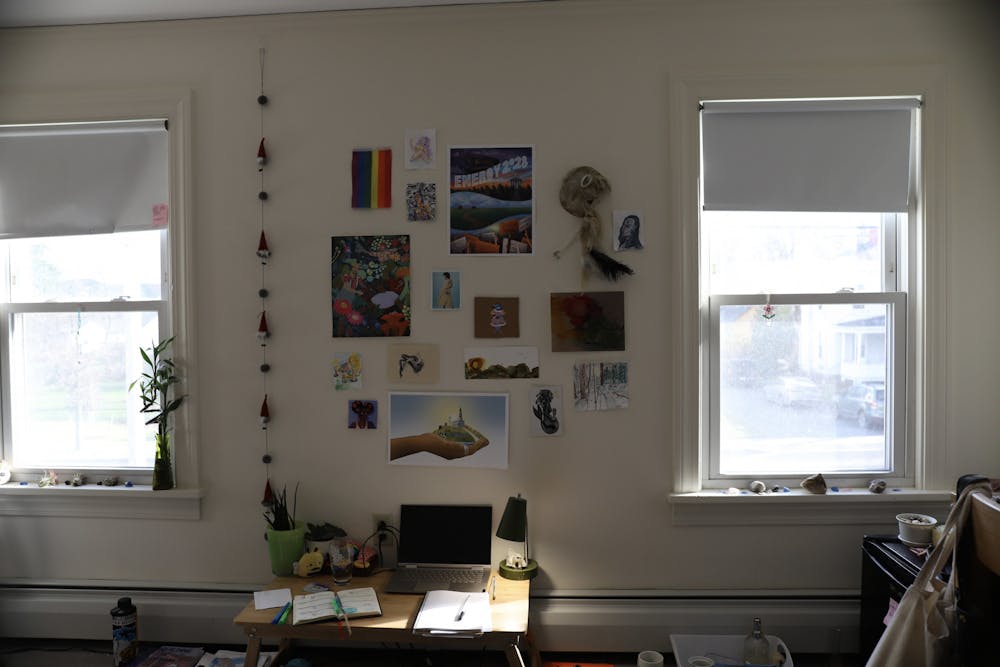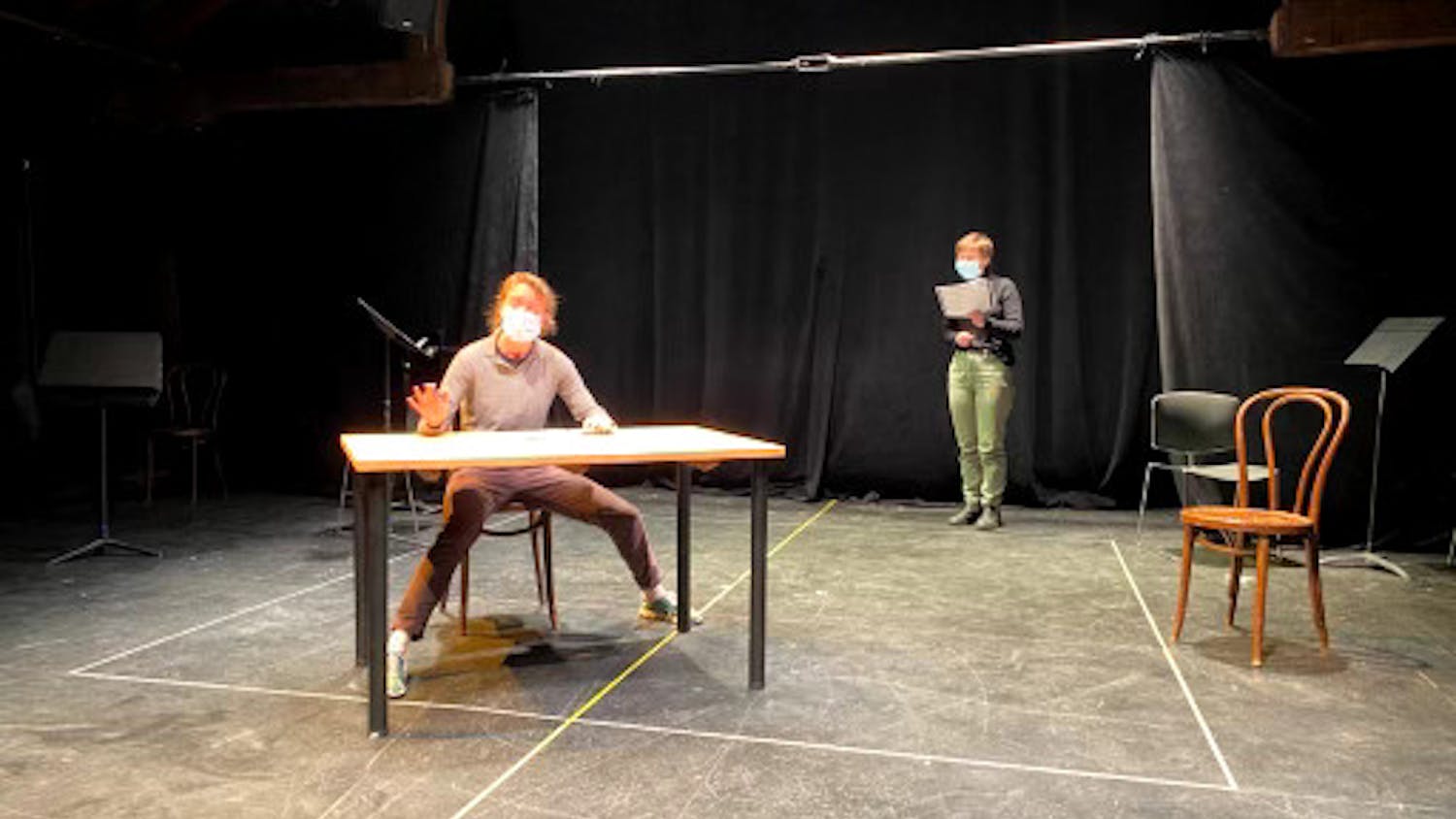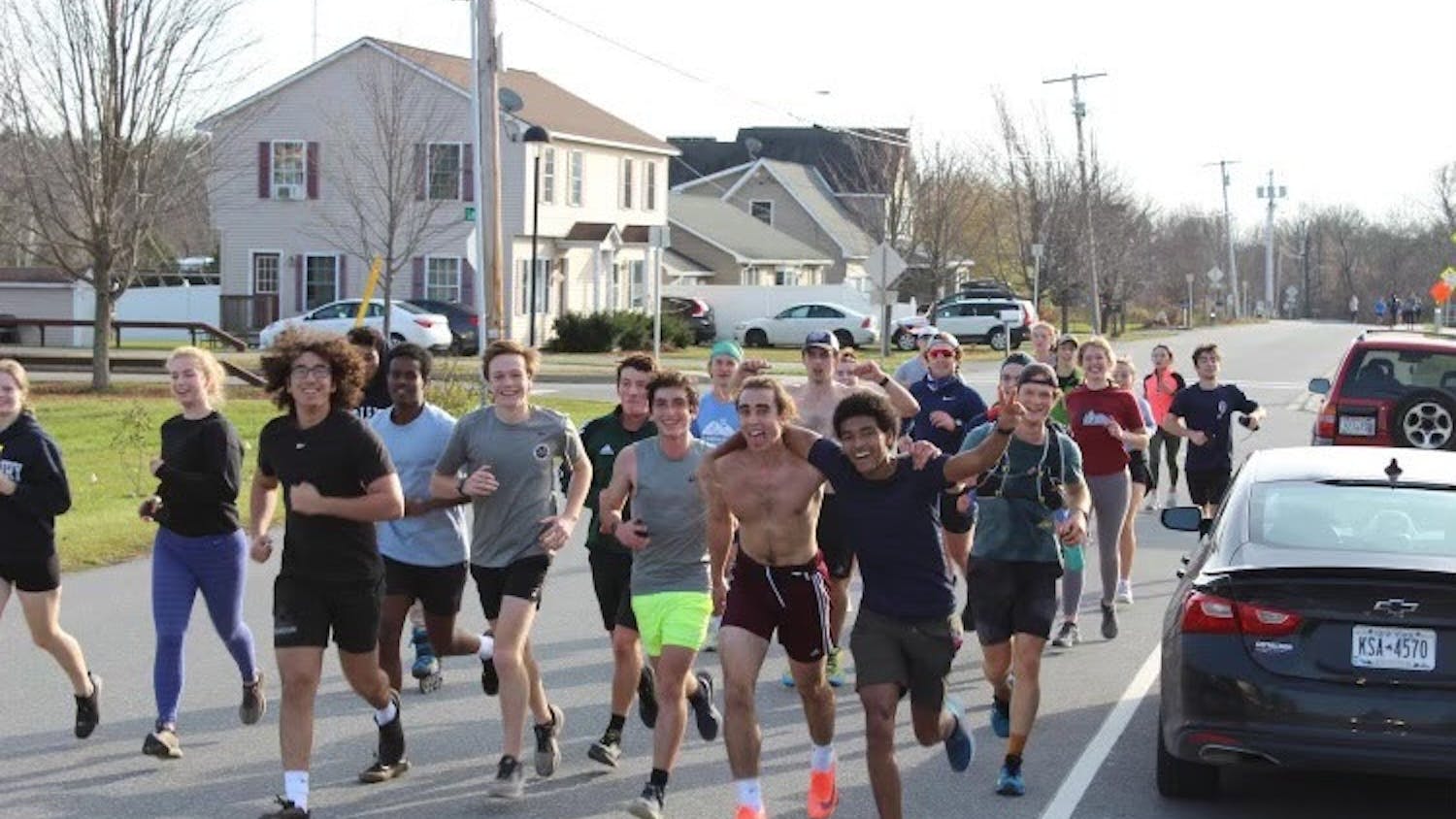Walking into Elizabeth’s bedroom located in the Chinese house, I was met with vibrant arts and crafts pinned to the walls and scattered across the floor. Elizabeth Austin ’24 (she/her) is my partner in our Oceanography course and I met Lily Shannon ’23 (they/them) during a pre-orientation Zoom for students with disabilities.
While both are from Memphis, Tenn., the couple met at a yard sale on the lawn of the Queer Studies House (QSH).
“We may have played together as children and just not known it,” Lily said.
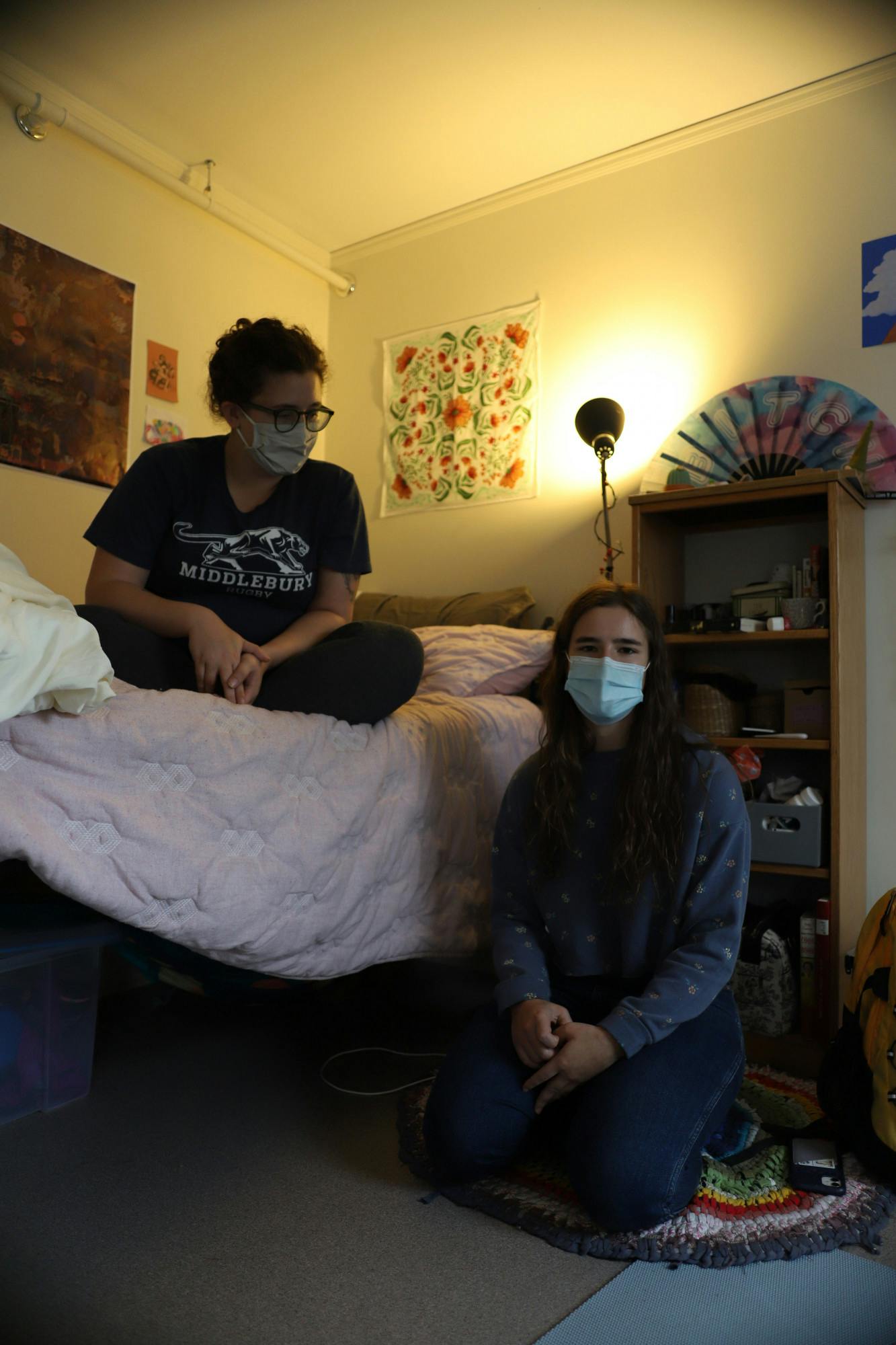
Sitting down to speak with Lily (left) and Elizabeth (right).
At the time, Lily was also recruiting members for the rugby team, of which they are the captain. “I joined the rugby team because they were cute,” giggled Elizabeth. After two and a half months and a 21-hour car ride together, Elizabeth finally gathered up the courage to ask Lily out.
On the topic of queer inclusivity at Middlebury, the couple agreed that the campus is a more affirming space than back home. “I don’t feel attacked for being queer [back home]. I just feel othered in a way that I don’t necessarily feel here,” Lily explained.
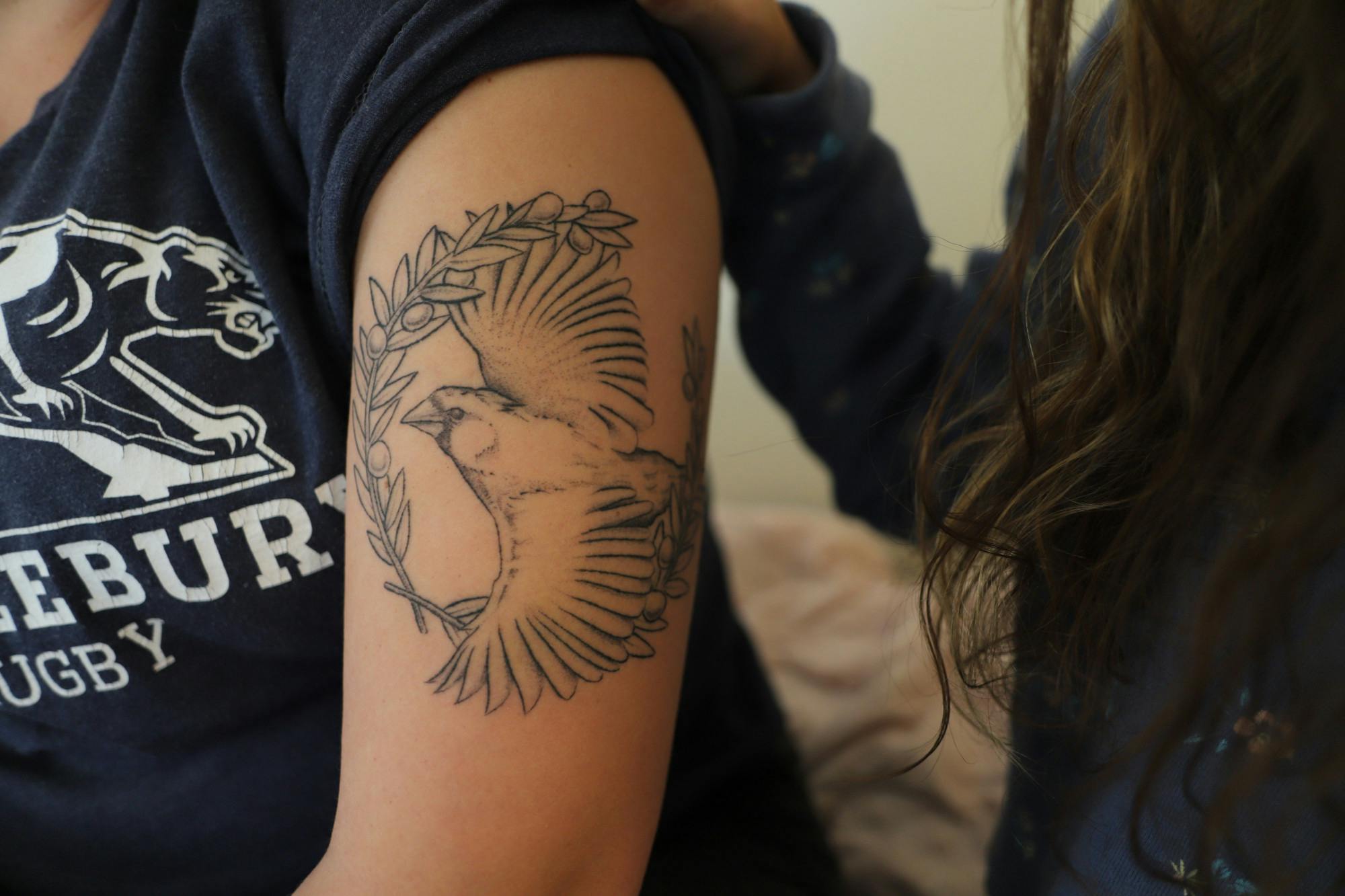
For Elizabeth, the ease at which queerness can be brought up in conversation also aids inclusion. She recalls an instance where she told our Oceanography professor about plans to visit Boston with her girlfriend over fall break. “Whereas at home I would be like, ‘My friend and I are going to Boston,’” Elizabeth said.
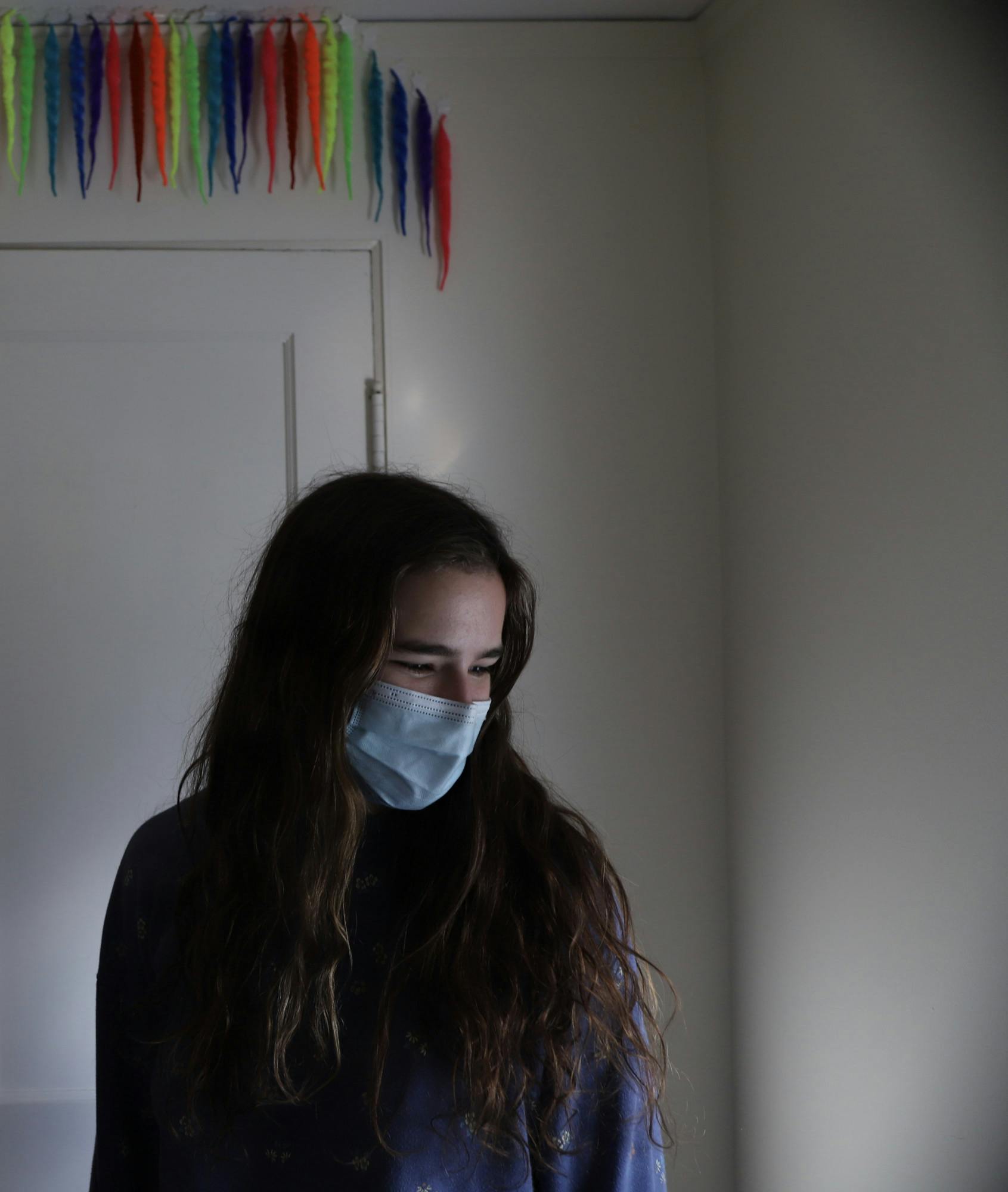
Elizabeth deep in thought.
I learn from Lily, who lives in QSH, that the role of the QSH house as a center for queer social life on campus varies from year to year with the residents of the home. The pandemic has limited certain traditions such as throwing parties after the Queers and Allies drag shows. “Right now the vibe of the QSH house is to have some music, chill with the housemates and have dinner together,” Elizabeth explained.
“In the future, there will be queer parties, I can guarantee it,” Lily chimed in.
My first conversation with Meg Farley ’24 (they/them) was in Ross after we both attended the Mental Health Forum. Now I sat with them in a small and cozy room located in Weybridge House. Behind them, books overflowed the shelves. The top of the shelves were lined with rows of mason jars.

Meg in their Weybridge home.
Meg grew up in the western suburbs of Chicago, one of the most Catholic regions of the country. They choose to re-imagine queerness by rejecting eighteen years of enculturation imbued in them by the Catholic church.
“I’m unlearning decades worth of internalised queer suppression,” Meg said.

Contemplative Meg.
According to Meg, queerness and faith are not perceived as apples-for-apples. “I was taught that queerness goes against our faith, but I’ve never actually believed that. I've never had a problem with my identities and religious beliefs. It was more the people preaching these religious beliefs have had problems with my identities. The Church is not preaching the truth of what love actually is,” they said.
I see myself as a pretty agnostic person, and the confidence that radiated from Meg as they sped through queer theory felt as if they were preaching a sort of religion.
“I'm of the belief that Trans is sacred. My existence should make other people question what they know of gender and sexuality,” Meg said.

Meg preaching to me and their tea.
The self–assuredness and thrill in the exploration of their queer identity was truly unmatched. Yet, it is necessary to recognize that this expression of queerness is a status that is not accessible for all.
“It takes a lot of privilege to be able to disregard these social standards and feel safe doing so. I used to rely on these standards for safety reasons and I sometimes still do, I just no longer need to and it's really freeing,” Meg said.
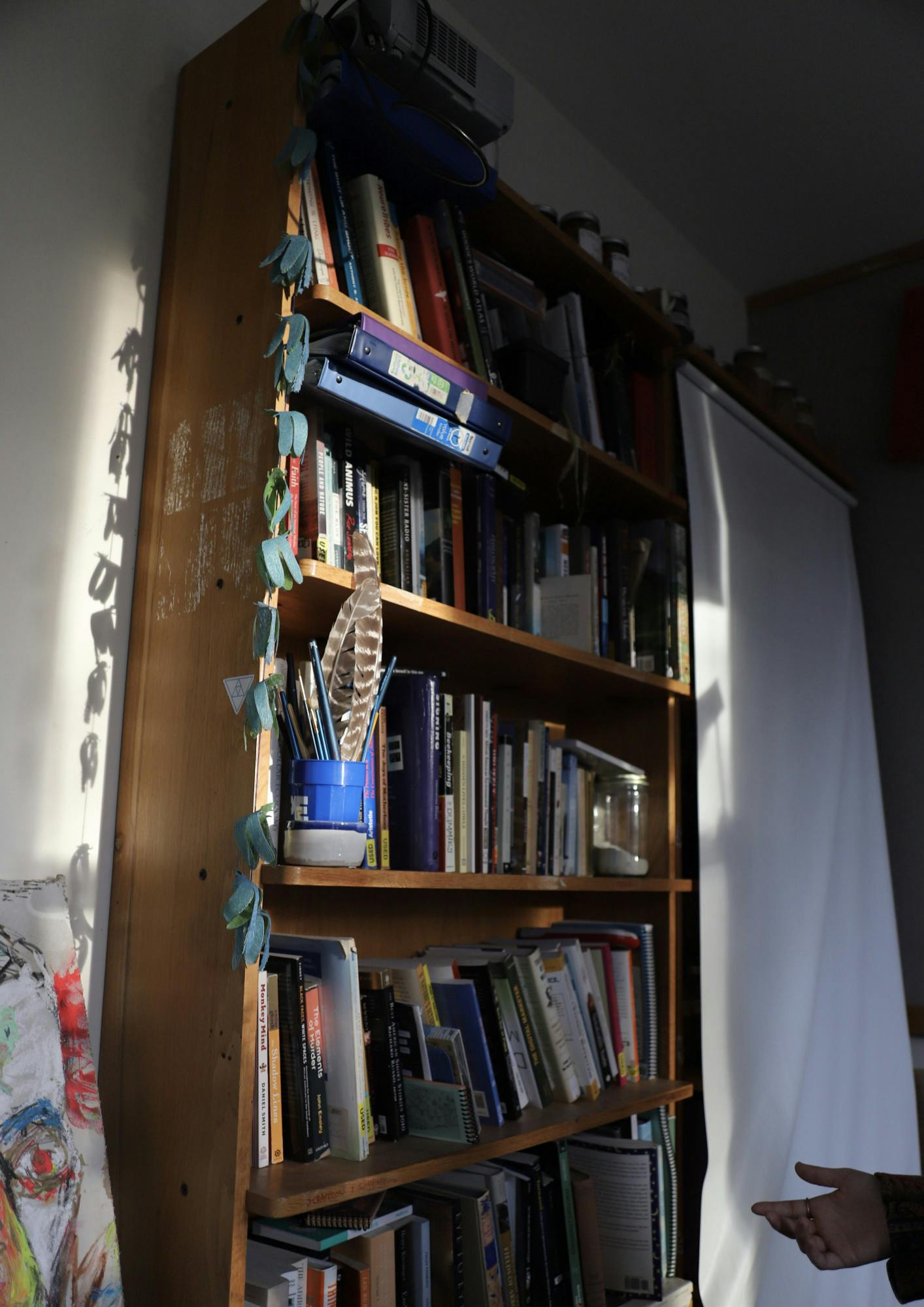
Earlier last spring when I was still a prospective student, I was lucky enough to exchange a few Instagram DMs with Cherry Lawrence ’23 (she/her), then formally met her at a couple of Women of Color (WOC) meetings. I spoke with Cherry in the Mitchell Green Room of the McCullough Student Center.
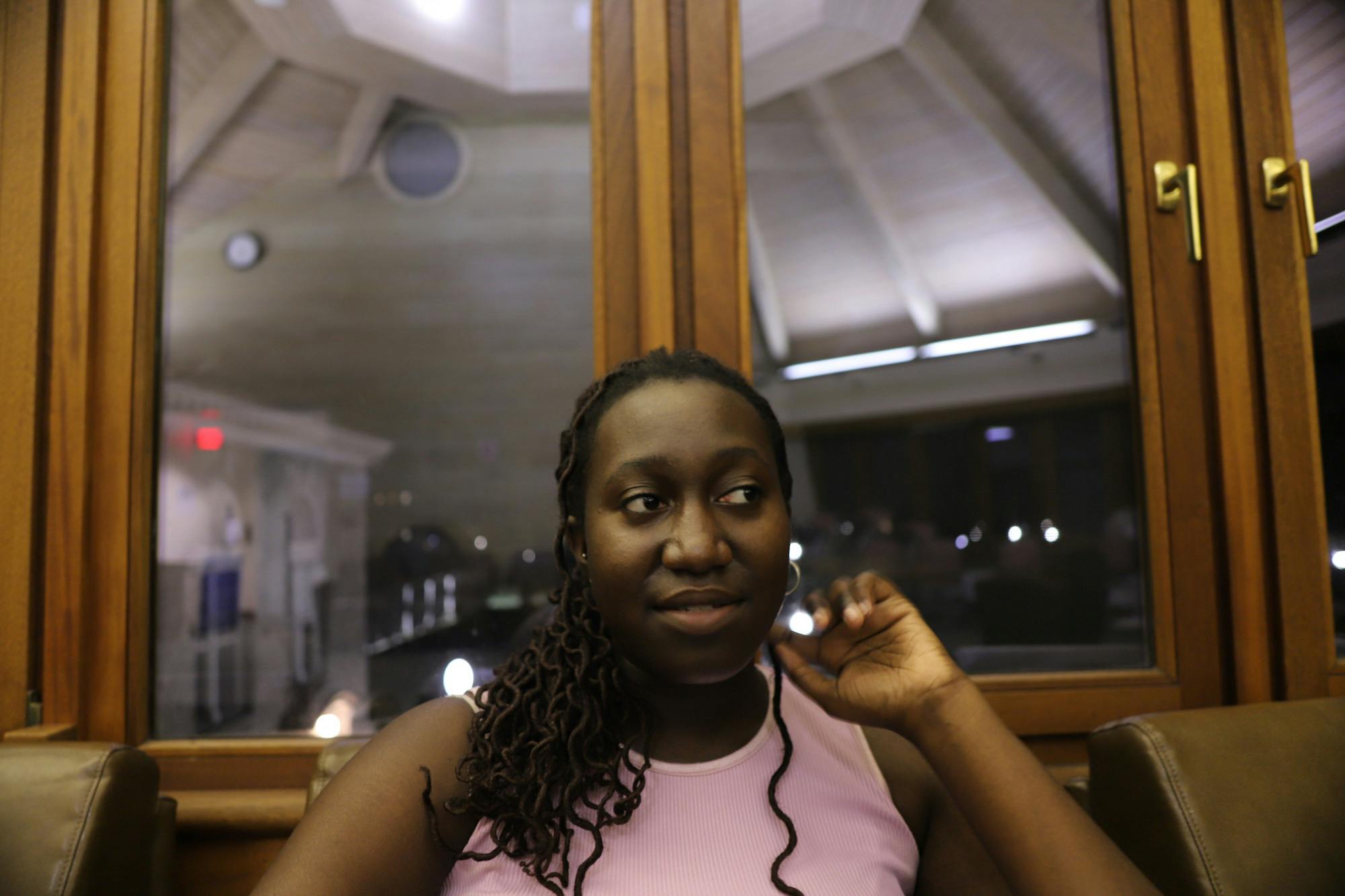
Cherry in the Mitchell Green Room.
I asked Cherry about her impressions of LGBTQ+ dating culture on this campus. Her response: “It has sucked.”
I prompted her to go on. She reveals that her brutally honest response was a residual from her first semester at Middlebury, when hookup culture took on a heightened form of toxic competitiveness.
And men.
“Not that I was actively doing it, but since I stopped expecting attention from guys and geared more of my interest towards non–men, it definitely has been better. But it also still does suck,” Cherry laughed.
“At Midd, the dating culture is already weird. Within the LGBTQ scene, it's weirder. And then being a woman of color, specifically Black, is like so niche and much weirder,” she said.
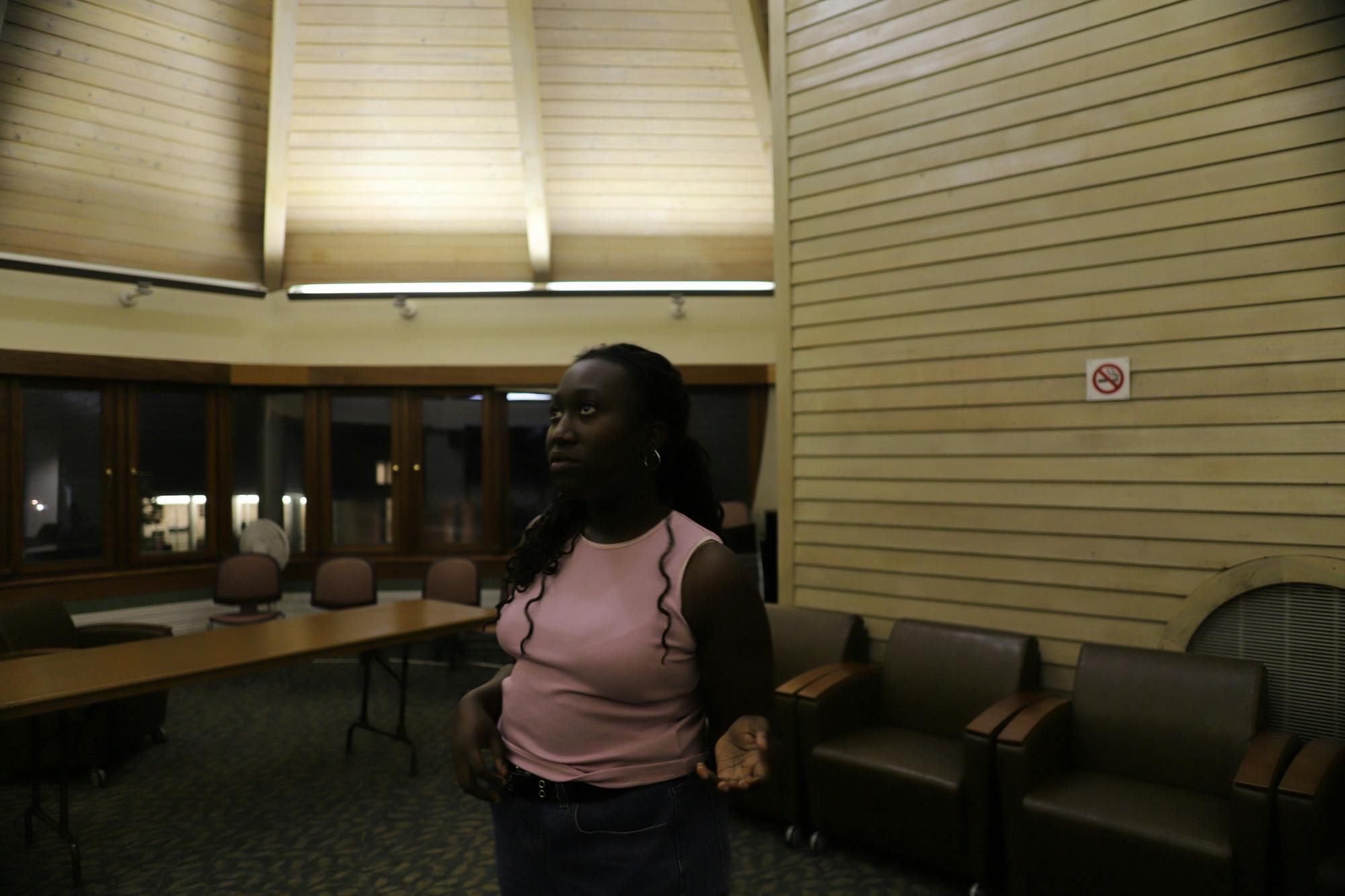
A pause in speech.
Cherry grew up in New York City, which is her direct point of reference when it comes to discussing the relationships between queerness and race at Middlebury. In comparison to New York, the campus can feel overwhelmingly white. Some students at Middlebury have not had the privilege of living and sharing experiences with people of color (POC). Thus, they may arrive on campus with presumptions about the “other” races. According to Cherry, these presumptions remain unchallenged if we do not actively position ourselves in circumstances to meet POC.
Cherry feels that when attention is directed towards POC, it is often in the form of fetishization, although in New York, this is sometimes less of a risk than at Middlebury. “If I chose to hook up with a white person in New York I usually see a smaller chance of me being fetishized because I’m not this exotic creature. I'm someone they see every day,” she said.
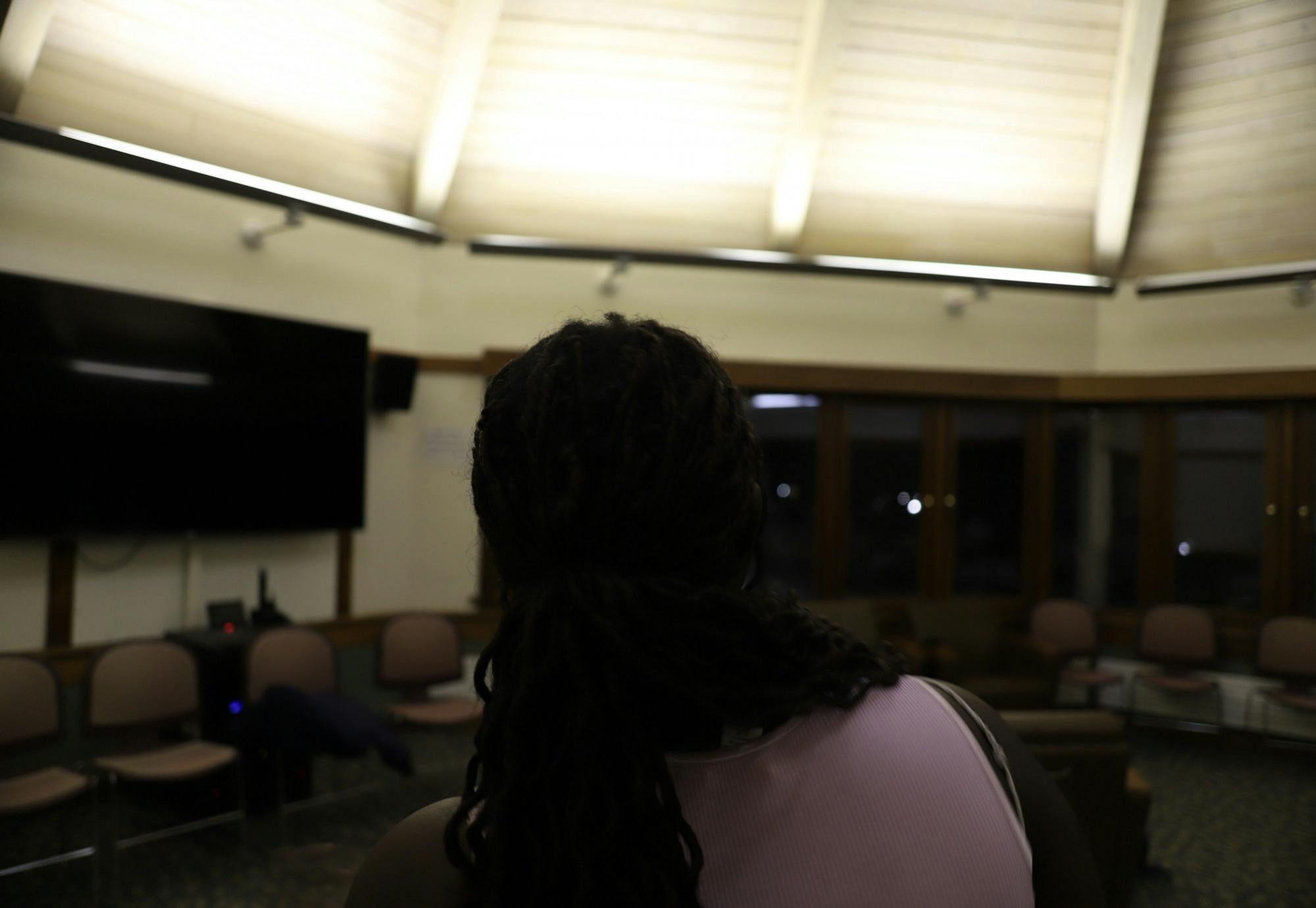
A back view of Cherry.
For a predominantly heterosexual campus, we can come to appreciate the array in lived experiences of queer students. It’s fascinating to reflect on the varying degrees of LGBTQ representation embedded into our upbringings and its influence on the exploration of queerness and expressions at Midd.

